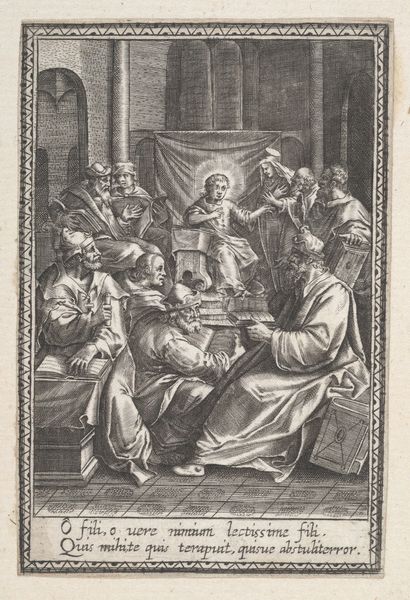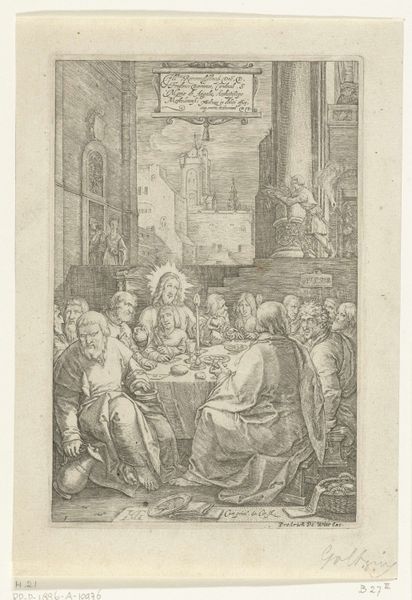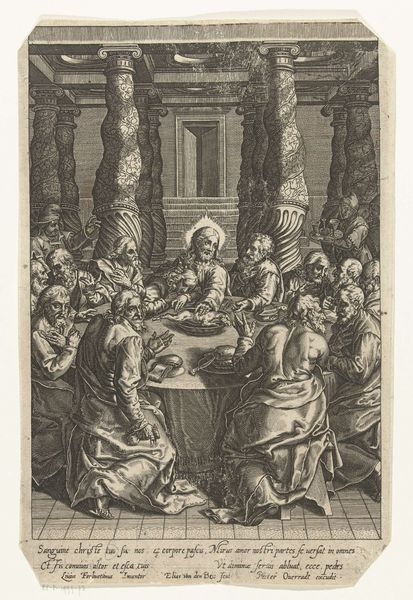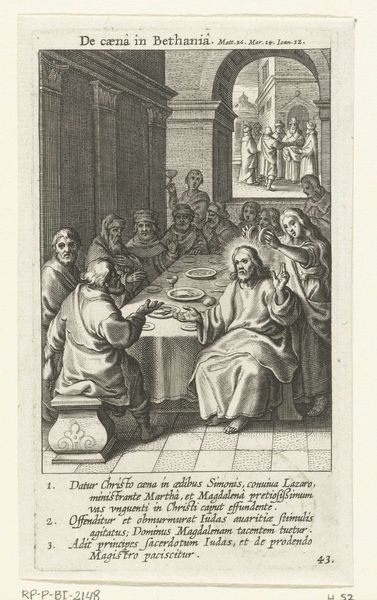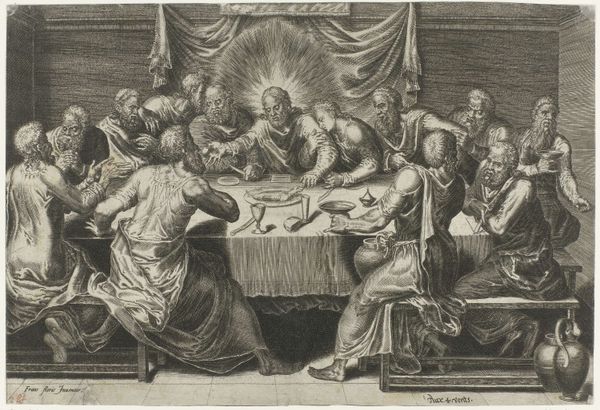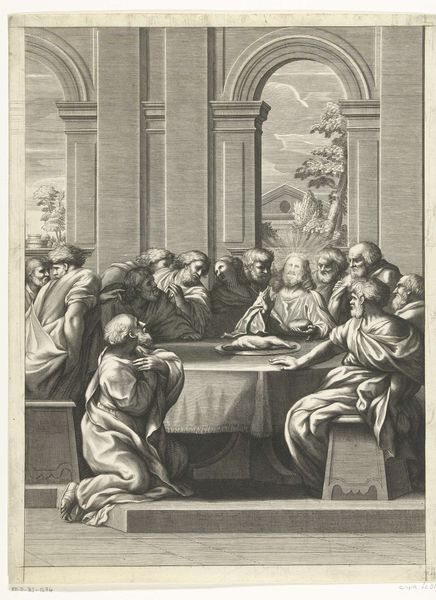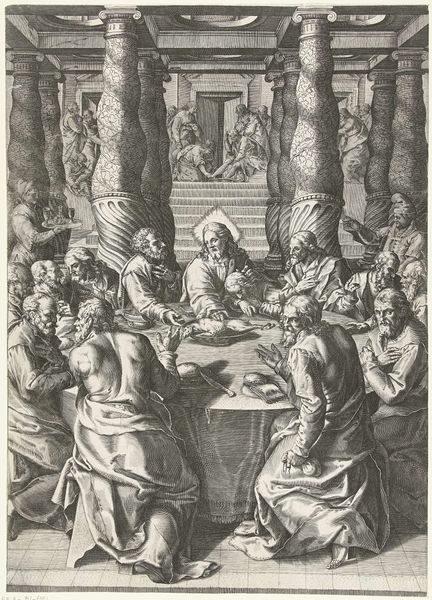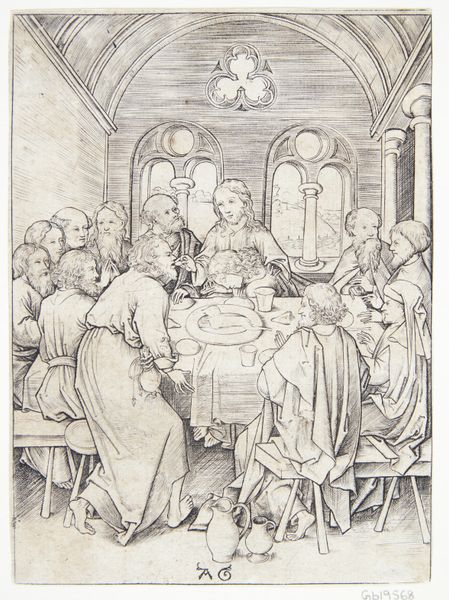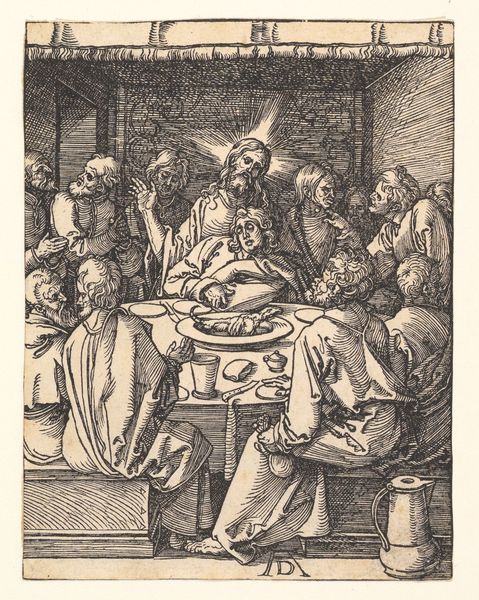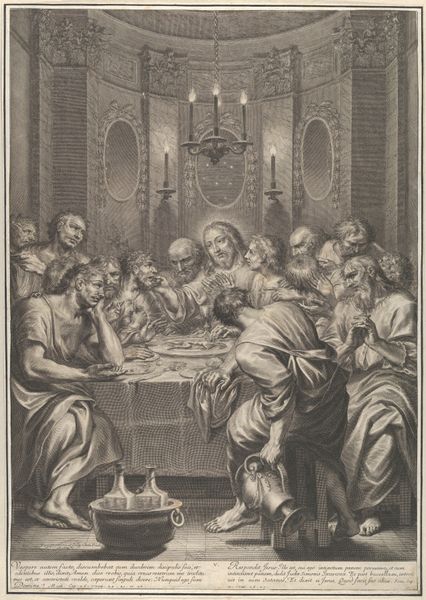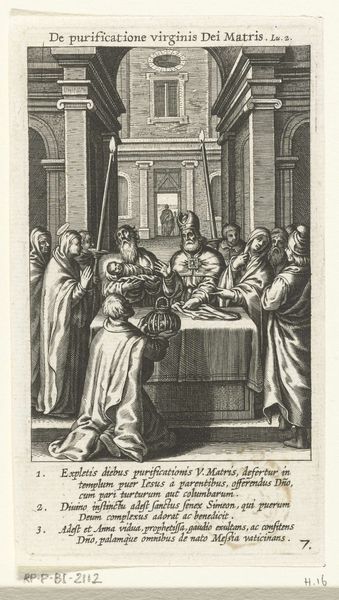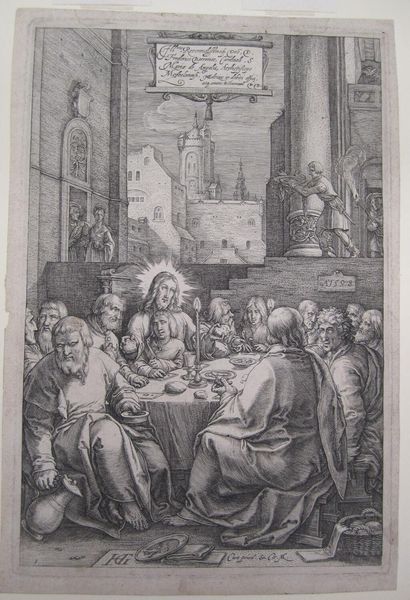
print, etching
#
narrative-art
# print
#
etching
#
figuration
#
11_renaissance
#
history-painting
Dimensions: height 237 mm, width 238 mm
Copyright: Rijks Museum: Open Domain
Curator: My first impression is that the mood seems strangely agitated. Everyone's gesturing and gesticulating; there's hardly any stillness at this table. Editor: Indeed. This print, entitled "Laatste Avondmaal", or "Last Supper" in English, dates from between 1534 and 1590. It’s currently held here at the Rijksmuseum and is attributed to Chrispijn van den Broeck. As a medium, it’s an etching, offering fascinating insight into printmaking techniques of the Renaissance. Curator: Van den Broeck captured the moment where Christ reveals that one of his apostles will betray him. Betrayal! We know how that story ends, and it carries so much emotional baggage for us today. I mean, look at Judas—is that him recoiling near the center, or am I projecting? Editor: It’s tempting to see the story enacted so vividly. But let’s also look at the process, the labor invested in this print. Consider the different lines used to create the values, the hatching and cross-hatching that would have been painstaking work, to give us these tonal changes. These materials allow him to make unlimited copies that can spread. The very making of this work allowed the narrative to reach wider audiences, beyond those who could read or even attend church. Curator: That's an interesting perspective. I find it hard to ignore the composition, the way all those gazes converge upon Christ. Even the architectural backdrop, the heavy drapery—it all emphasizes the solemnity, even the doom of the moment. There’s that shared chalice, foreshadowing sacrifice. The halo emphasizes divinity. Editor: You see symbolic doom, and I see labor. How many impressions could have been made from this single plate? Where would these prints have been sold and who could afford them? The symbolism functions, yes, but also works as a piece of consumable material circulating within a specific economy of faith. Curator: I guess for me it goes deeper. That simple loaf of bread… the weight of history behind those symbols, it's truly captivating. The gestures and body language offer a rich vocabulary of human response to divine knowledge. Editor: Seeing Van den Broeck's "Last Supper" through both our perspectives shows that artistic interpretation itself is an ongoing process, shaped by what we choose to focus on. Curator: Yes, focusing on that rich, interwoven story that can emerge.
Comments
No comments
Be the first to comment and join the conversation on the ultimate creative platform.

